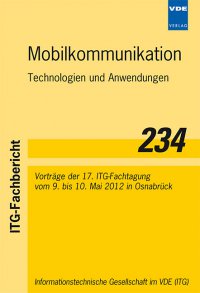Performance impact of Mobile Cloud Computing on Wireless LAN
Konferenz: Mobilkommunikation - 17. ITG-Fachtagung
09.05.2012 - 10.05.2012 in Osnabrück, Deutschland
Tagungsband: Mobilkommunikation
Seiten: 6Sprache: EnglischTyp: PDF
Persönliche VDE-Mitglieder erhalten auf diesen Artikel 10% Rabatt
Autoren:
Wadhawan, Arun; Daehne, Patrick (Fraunhofer Institut for Computer Graphics IGD, Darmstadt, Germany)
Fuhrmann, Woldemar (Department of Computer Science, University of Applied Sciences Darmstadt, Darmstadt, Germany)
Ghita, Bogdan (Centre for Security, Communications and Network Research, University of Plymouth, Plymouth, UK)
Inhalt:
For convenience more and more communication is shifted to wireless networks and enterprise communication follows this general trend. With that the requirements have changed considering mobile applications and end devices. Even that the mobile devices get more resources e.g. performance (CPU), graphic power (GPU) and capacity (RAM, hard disk size), new mobile applications require more advanced resources. These new applications benefit from the cloud approach and introduce the client/server concept onto mobile devices. In this paper we will analyse today’s enterprise Wireless LAN implementations to support these new mobile applications. These upcoming applications require high processing power and a reliable network infrastructure as most of the data will be transferred between the mobile device and the cloud infrastructure. Furthermore we will analyse the capabilities in regard to QoS to identify if these QoS mechanisms can help to improve network performance and allow these new applications to work. These new applications require cloud computing where the demand on high bandwidth and low latency has to be fulfilled. Therefore investigating today’s standard on wireless communication in enterprises is highly important and the key question will be if those applications are supported in existing Wireless LAN implementations. This analysis will be shown in the form of a practical experiment where key requirements on mobile communication in enterprise environments are identified. Furthermore restrictions will be shown that limit these applications to function properly. These restrictions are a starting point to enhance or redesign wireless network infrastructures in enterprise environments.


